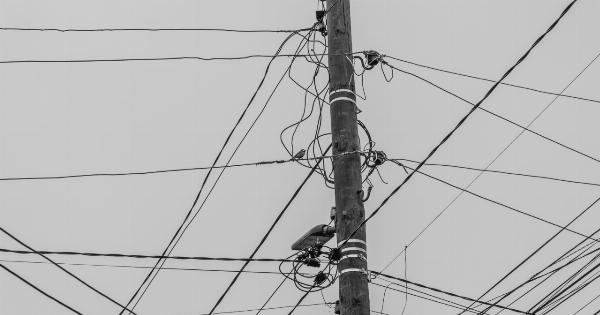Warts are a common skin condition that affects people of all ages. These small, rough bumps or growths can appear on any part of the body and are caused by the human papillomavirus (HPV).
There are several different types of warts, each with its own unique characteristics and treatment options. In this article, we will explore the various types of warts and provide insights into their causes, symptoms, and effective treatment methods.
1. Common Warts
Common warts, also known as verruca vulgaris, are the most frequently occurring type of warts. They typically appear on the hands, fingers, and around the nails but can also manifest on other areas of the body.
Common warts have a rough, grainy texture and may resemble a cauliflower. These warts are generally harmless but can sometimes cause discomfort or embarrassment.
2. Plantar Warts
Plantar warts develop on the soles of the feet and can be quite painful due to the pressure exerted on them while walking or standing. These warts have a hard, thickened skin on the surface and may appear as a single lesion or in clusters.
Plantar warts tend to have small black dots within them, which are actually tiny blood vessels. If left untreated, plantar warts can spread and become more painful over time.
3. Flat Warts
Flat warts, also called plane warts, are most commonly found on the face, neck, arms, and legs. Unlike common warts, they have a smooth, flattened appearance and are usually flesh-toned or slightly pink.
Flat warts tend to occur in larger numbers, often in clusters of 20 to 100 or more. These warts can be bothersome, especially when they occur in highly visible areas or get irritated by shaving or clothing friction.
4. Filiform Warts
Filiform warts are long and narrow in shape, resembling small threads or fingers. They commonly appear on the face, particularly around the mouth, eyes, and nose. These warts can also manifest on the neck, under the chin, or on the eyelids.
Filiform warts may have a slightly elevated surface and are usually flesh-colored. Due to their location, they can cause distress and self-consciousness for individuals who have them.
5. Periungual Warts
Periungual warts develop around the nails and can affect both fingernails and toenails. These warts tend to be rough and irregular in shape and may cause the nail to become brittle or split.
If left untreated, periungual warts can interfere with nail growth and cause pain. Nail-biting or picking at the cuticles can increase the risk of developing periungual warts.
6. Genital Warts
Genital warts are a sexually transmitted infection caused by certain strains of HPV. These warts occur on or around the genital or anal areas. Genital warts can range in size from small, flat lesions to larger, cauliflower-like growths.
They can cause itching, discomfort, and may bleed during sexual activity. It is important to seek medical attention if you suspect you have genital warts, as they can pose a risk to your sexual health.
7. Mosaic Warts
Mosaic warts are a cluster of plantar warts conjoined together in a larger, irregular formation. As the name suggests, these warts resemble a mosaic pattern and are commonly found on the soles of the feet.
Mosaic warts can be particularly stubborn and resistant to treatment due to their multiple warts combined into a single lesion.
8. Oral Warts
Oral warts occur in the mouth and throat. They can appear on the tongue, lips, cheeks, gums, or roof of the mouth. Oral warts may be flat or raised and have a white or pinkish color.
These warts can cause discomfort, especially when eating or drinking, and may bleed easily. If you notice any unusual growths or lesions in your mouth, it is essential to consult a healthcare professional for evaluation.
9. Juvenile Warts
Juvenile warts, also known as pediatric warts, mainly affect children and adolescents. These warts can appear on any part of the body and are usually smaller in size compared to warts in adults.
They often go away on their own within a couple of years but can be treated if they cause pain, discomfort, or embarrassment.
10. Verruca Plana
Verruca plana, or flat warts, are usually small in size and have a flat or slightly raised appearance. They commonly appear on the face, legs, arms, or other areas that are frequently shaved. Verruca plana is more common in children and young adults.
These warts may go away on their own, but treatment options are available if required.
Treatment Options for Warts
The treatment for warts depends on the type, location, and severity of the warts. Some common treatment methods include:.
1. Over-the-Counter Medications
There are various over-the-counter medications available that contain salicylic acid, which can be applied directly to the warts to promote their removal. These medications are available as solutions, gels, pads, or plasters.
It’s important to follow the product instructions carefully and consult a healthcare professional if you have any concerns.
2. Cryotherapy
Cryotherapy involves freezing the warts using liquid nitrogen. This freezing method destroys the wart tissue, allowing a new, healthy skin to develop in its place.
Cryotherapy is typically performed by a healthcare professional and may require multiple sessions for complete wart removal.
3. Electrosurgery
Electrosurgery, also known as electrocautery, is a procedure wherein an electric current is used to burn and remove the warts. This method is generally performed under local anesthesia and may require stitches in some cases.
Electrosurgery is often reserved for persistent, larger warts or those that have not responded to other treatment options.
4. Laser Treatment
In laser treatment, targeted laser beams are used to destroy the wart tissue. This method is precise and helps minimize damage to surrounding healthy skin.
Laser treatment is often recommended for warts that have not responded to other treatments or are located in delicate areas.
5. Surgical Excision
If other treatment options fail, surgical excision may be considered. In this procedure, the warts are cut out using a scalpel or other surgical instruments.
Surgical excision is typically reserved for larger warts or those that have become persistent and resistant to other treatment methods.
It’s important to note that self-diagnosis and removal techniques may not be effective and can lead to complications.
It is always recommended to consult a healthcare professional, preferably a dermatologist, for an accurate diagnosis and appropriate treatment.































